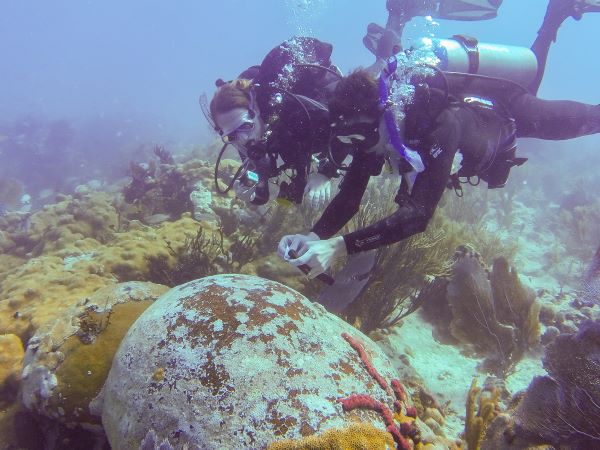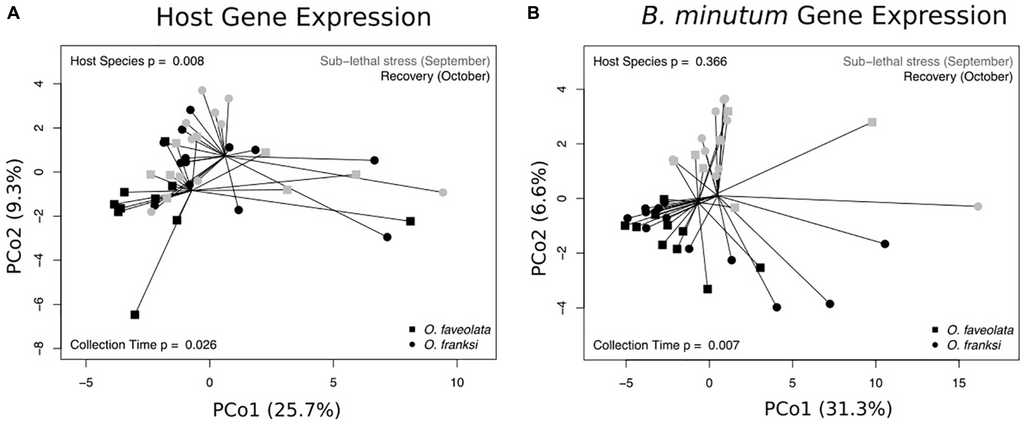Coral Resilience to Disturbances
Impacts of disturbances on corals and their microbial communities
Changes in anthropogenic activity and the climate expose corals to devastating disturbance events, such as anomalous storms and rapid changes in temperature, salinity, nutrient input, and sedimentation. The Davies lab studies the influences of these disturbances on corals, both from the perspective of the coral host and their symbiotic microorganisms.
Hurricane Irma
 In 2017, the Davies Lab was subcontracted to work with the Castillo lab at UNC Chapel Hill on a supplement to their NSF award exploring the influence of Hurricane Irma on coral microbial communities in the Florida Keys. Within corals, communities of algal symbionts and bacteria can exchange nutrients and metabolic byproducts and form complex co-occurrence networks, however little is known about the resilience of these networks to disturbance. Immediately after Hurricane Irma struck Florida as a category 5 storm, our team visited sites along the Florida Keys and sampled coral microbial communities to compare to samples we had previously collected in the years prior. We then returned one year after the storm disturbance to assess whether these coral microbial communities had recovered. This work is being led by Nicola Kriefall and will help elucidate the influence of disturbance events on coral microbial communities, which are projected to intensify over the coming century. Want to learn more? Check out this blogpost!
In 2017, the Davies Lab was subcontracted to work with the Castillo lab at UNC Chapel Hill on a supplement to their NSF award exploring the influence of Hurricane Irma on coral microbial communities in the Florida Keys. Within corals, communities of algal symbionts and bacteria can exchange nutrients and metabolic byproducts and form complex co-occurrence networks, however little is known about the resilience of these networks to disturbance. Immediately after Hurricane Irma struck Florida as a category 5 storm, our team visited sites along the Florida Keys and sampled coral microbial communities to compare to samples we had previously collected in the years prior. We then returned one year after the storm disturbance to assess whether these coral microbial communities had recovered. This work is being led by Nicola Kriefall and will help elucidate the influence of disturbance events on coral microbial communities, which are projected to intensify over the coming century. Want to learn more? Check out this blogpost!

Hurricane Harvey
 Hurricane Harvey brought record-breaking levels of rainfall and flooding to Texas in June 2017, causing unprecedented freshwater runoff to the Gulf of Mexico. The Davies Lab acquired NSF RAPID funding in collaboration with the Correa, Shamberger, Santiago-Vázquez, and Sylvan labs to explore the effects of this freshwater on reefs of the Flower Garden Banks National Marine Sanctuary. Our team monitored the freshwater plume and collected samples immediately after Hurricane Harvey and after one month of stress recovery. During these expeditions, we collected coral and sponge samples for genomic profiling and performed transects collecting seawater samples for microbial and water chemistry analyses. Dr. Rachel Wright (now at Smith College) compared coral and algal symbiont gene expression to identify signatures of sublethal stress experienced by these offshore corals, which included enrichment of cellular oxidative stress response genes.
Hurricane Harvey brought record-breaking levels of rainfall and flooding to Texas in June 2017, causing unprecedented freshwater runoff to the Gulf of Mexico. The Davies Lab acquired NSF RAPID funding in collaboration with the Correa, Shamberger, Santiago-Vázquez, and Sylvan labs to explore the effects of this freshwater on reefs of the Flower Garden Banks National Marine Sanctuary. Our team monitored the freshwater plume and collected samples immediately after Hurricane Harvey and after one month of stress recovery. During these expeditions, we collected coral and sponge samples for genomic profiling and performed transects collecting seawater samples for microbial and water chemistry analyses. Dr. Rachel Wright (now at Smith College) compared coral and algal symbiont gene expression to identify signatures of sublethal stress experienced by these offshore corals, which included enrichment of cellular oxidative stress response genes.

Using gene expression as a diagnostic tool: The mystery of a localized mortality event at the Flower Garden Banks
In July of 2016, a localized mortality event (LME) occurred on the east Flower Garden Bank that included mortality of corals, sponges, sea urchins, starfish, clams, and more. In collaboration with the FGBNMS staff, Dr. Davies sampled tissue from healthy and sick patches of affected corals and completely healthy nearby colonies of two coral species. In collaboration with Dr. Rachel Wright (now at Smith College), we profiled coral and algal symbiont gene expression patterns. These patterns were consistent with a low oxygen event, which also corroborated results from other teams working on different aspects of the LME. In order to confirm that these expression patterns were consistent with low oxygen, Dr. Wright performed a low oxygen manipulation experiment and found remarkable overlap in gene expression patterns, confirming field collected data. These analyses are ongoing.